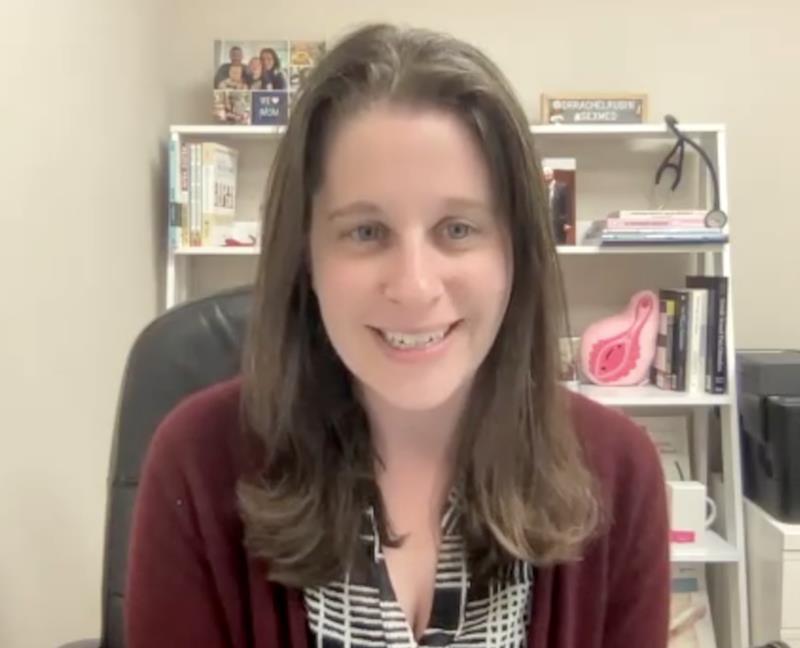madman
Super Moderator

Urology Times 50 Innovations Series: Treatment of female hypoactive sexual desire disorder
"We as urologists are board certified to take care of all genders. We are really good sexual medicine doctors, and we need to apply what we know about sexual medicine, not just for our male patients, but for all of our patients," says Rachel S. Rubin, MD
Urology Times® is celebrating its 50th anniversary in 2022. To mark the occasion, we are highlighting 50 of the top innovations and developments that have transformed the field of urology over the past 50 years. In this installment, Rachel S. Rubin, MD, discusses the evolution in the treatment of female hypoactive sexual desire disorder (HSDD). Rubin is a board-certified urologist with fellowship training in sexual medicine. She is an assistant clinical professor in urology at Georgetown University and recently started a private practice in the Washington DC area.
Could you provide an overview of the historical view and approach to female HSDD and discuss some of the misconceptions that surround this condition?
Even in 2022, there are a lot of misconceptions surrounding HSDD, mostly because we are not trained to think of it as a medical problem. Many people think libido is a psychosocial construct and is not something that can be improved with medications. But this goes against our understanding that antidepressants and other hormonal medications have a clear impact on libido. As urologists, we discuss and treat concerns surrounding male libido all the time. It's very easy for us to talk about libido and testosterone and different ways to boost dopamine in men's brains. Unfortunately, we have not been equal in our treatment strategies regarding female libido and HSDD.HSDD was first described several decades ago by Helen Singer Kaplan[, Ph.D.]. What makes it different than just low libido is that the patient must be bothered by their symptoms. About 40% of all women will say they have low libido, but only about 10% are reportedly bothered by it. Think of BPH. When a man has BPH symptoms but is not bothered by them, it's not really a medical problem. He has to say, "Doctor, I want to do something for my BPH symptoms; I'm bothered." That's why we ask a "bother" question. Now in 2022, we have several solutions that can help us approach HSDD in women and treat our patients in a biopsychosocial construct, very similar to how we treat our male patients.
What treatments currently exist for female HSDD?
When we treat HSDD in women, we take a biopsychosocial approach. What's really important, just like with our male patients, is to do a history and physical exam and really try to understand what's happening. In addition to sex therapy, which is wonderful but often expensive and not covered by insurance, we now have biologic treatment options.Education and Sex therapy will always be important when managing any issues in sexual health. We know sex therapy works for all of our patients. I always say: Nobody is so good at sex that they can't get better, right? Improving sex education, improving communication with our partners. How many sex lives can we fix if we just explain how our body parts work? Getting our patients to truly understand the biomechanics of that can be wonderful for improving HSDD in a relationship.
There is also quite a bit of data on mindfulness and certain cognitive behavioral therapy approaches in helping people with low libido.
The new thing that has happened in this space is medications. Now, we've been using some medications off-label for years in our male and female patients. Medications like testosterone, bupropion, and buspirone have been used for a long time to help improve libido.
As of 2022, we have 2 FDA-approved medications for HSDD specifically in premenopausal women. The first one that came to market in 2015 is called flibanserin [Addyi]. It’s a nightly medication. It takes about 2 to 3 months to know if you’re a responder, and it helps improve desire. Studies have also found that it improves arousal, orgasm, lubrication, and satisfaction as well. It’s a nightly medication; it makes you sleepy and often can replace any other sleep aids.
The second one on the market is called bremelanotide [Vyleesi], which is an auto-injector that you take an hour before you “want to want,” so it’s more of an on-demand medication. It’s a subcutaneous auto-injector; you put it in your belly or your thigh. It works on the melanocortin receptors and gives the brain a boost of dopamine. The biggest side effect is nausea, and you don't want to give it to someone who has uncontrolled hypertension.
Those are the 2 biggest things that have come to market in the past decade. Of course, testosterone is a big conversation starter. We know testosterone works for libido in women much the same way as it works for men. But we have many FDA-approved products for men and no FDA-approved products for women. In 2019, a global position statement about the use of testosterone in women was put out by a number of societies that stated that testosterone works, it's safe, and should be considered in postmenopausal women with HSDD. It is approved in Australia for use in postmenopausal women. But due to some FDA challenges and costs, it hasn't been able to come to market in the United States. But it works quite well.


















